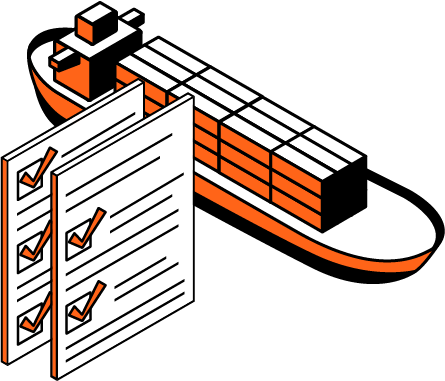Shipper | Best practices
5 steps to optimize your ocean carrier contract negotiations
Ensure a smoother supply chain by taking control of your ocean carrier contract negotiations.
Set your business up for success in the new year

The extreme market conditions we’ve recently experienced mean it’s time to get serious about your plan for resiliency this year. As shippers, one way you can ensure a smoother supply chain is by taking control of your ocean carrier contract negotiations. This sets you up for success as your product makes the first leg of its journey through your supply chain and gives you flexibility (so you can move those hot containers first) once it arrives at the port.
Below are our tips for ensuring you come out of your negotiations on top, and with more control, visibility, flexibility, and access to the reliable capacity your business requires.
Tips for ensuring you come out of your negotiations on top
- Know your current volumes, but also combine growth potential and emerging markets to avoid multiple contract amendments for new origin/destination lanes before beginning negotiations. This transparency in planning helps your carrier provide the best rates and capacity you’ll need. Looking at historical data probably isn’t enough given the current environment—the more work you put in on the front end, the better the service you will ultimately receive.
- Be organized and prepared to work with multiple steamship line (SSL) contract formats on both sides of the negotiation. Also set up-front expectations on things like Bunker Adjustment Factor surcharge (BAF) formatting and formula-driven levers, to avoid surprises mid-negotiation. Ensure items such as chassis and other accessorial charges are clearly defined. Lastly, consider a mid-term refresh or offer extensions of what may already be working well.
- Know the strategy and develop key relationships in all markets in which you operate – and work with a dray provider and commercial port liaison. Use this checks and balances approach ahead of conversations with each carrier on new service offerings, lanes, and product offerings where strategic relationships could make sense and a mutual win could happen. A dray provider like Schneider, who has relationships at numerous key ocean and inland gateways, can ensure your import strategy is optimized for your holistic North American network.
- Be specific with your ocean carrier: On terms like free time, caveats for things like cargo loss language and limits of liability. Everything is negotiable within reason. As you negotiate these critical terms, keep your dray provider in the loop so they can provide you feedback on feasibility. This clear communication to both parties opens the door for creative and tailored solutioning.
- Consider contracting directly with a national dray provider for the access to capacity you’ll need and the flexibility you’ll undoubtedly require as we navigate this new normal. While letting your SSL manage your dray may seem easier than managing it yourself, it leaves you with a lack of control. What will your service levels look like? Will you get the capacity you need to deliver in this tumultuous and tight market? If you prefer to keep your hands out of the weeds with a dray provider, let your ocean carrier know who you prefer to have dray your freight once it arrives at the port; this is commonly known as nominating your dray carrier.
Partner with a creative and capable logistics provider who can explore out-of-the-box ideas to provide you the right mix of service and cost

A dedicated capacity model and/or a control tower approach where leveraging your logistics provider’s engineering, data science, and network design capabilities ensures your network is fine-tuned for success.
Schneider has more than 25 years of experience unwinding the chaos at the ports, best-in-class technology and a reliable presence at all major U.S. gateways. Our port logistics and supply chain teams can guide you to an optimized solution that ensures once your freight arrives, it moves swiftly out of the port and to the next destination in your supply chain.
Drive your business forward
Sign up to receive our industry leading newsletter with case studies and insights you can put to use for your business.












